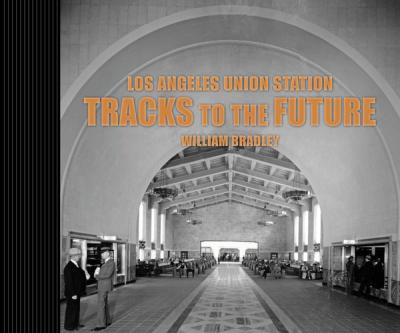
“Los Angeles Union Station- opened May 7, 1939, after days of celebration- was the last great train station built in the United States. Intended as a grand portal to a grand Los Angeles, it was an anomaly, built at a time when America was eager to drive or fly to its chosen destinations. Protected by early inclusion on the National Registry of Historic Places for its iconic architecture, Los Angeles Union Station has had an astonishing and unpredictable rebirth. As the city modernizes its public transportation system linking the culturally and geographically diverse communities Southern California , Union Station-in all its Mission Revival glory-is suddenly the hub of the country’s newest light rail and subway system, serving hundreds of thousands of people each week. . Where Pullman cars and Harvey Girls once served commuters, where the Super Chief and the Coast Starlight, Streamliners and Domeliners converged, Los Angeles Union Station is now a living, breathing center of transportation.
Author William Bradley relates a rich history of fierce battles, cultural relocation, and astounding financial risks culminating in one of California’s most important stories. Augmenting his words with vintage images, Bradley not only shares the tale of the terminal, but of the trains that rode its tracks- those 1939 tracks to the future.
144 pages
150+ rare black and white and color images
12” X 10”
”
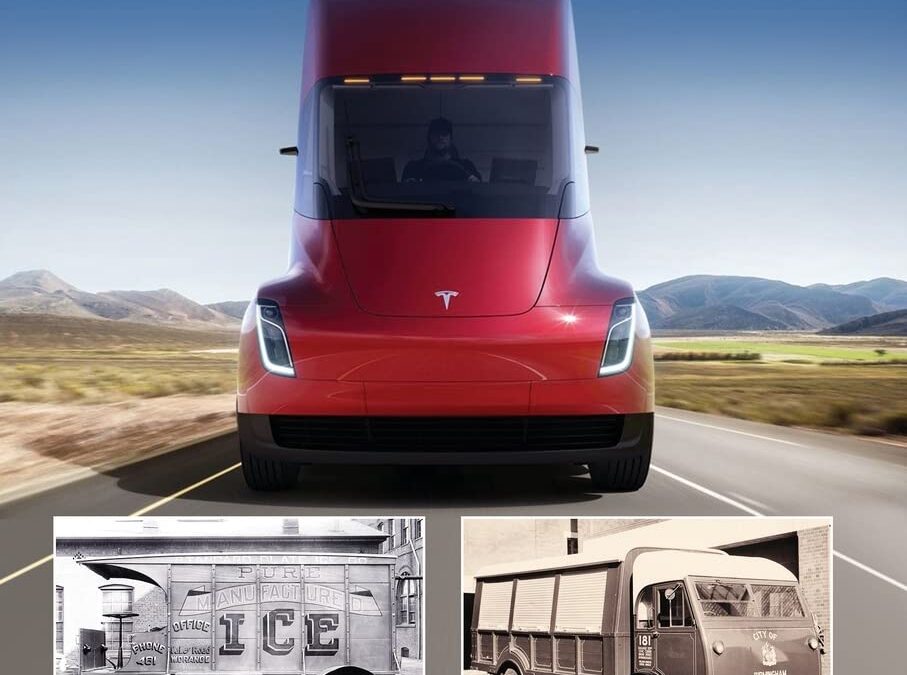
Welcomed at end of the 19th century as the solution to the severe problem of horse manure in city streets, electric trucks soon became the norm for short-haul commercial deliveries. Though reliable, they were gradually replaced by gasoline-powered trucks for long-haul deliveries–although a fleet of electric milk trucks survived in Great Britain into the 1960s. Industrial electric vehicles never disappeared from factories and ports. During the past decade, with the availability of the lithium-ion battery, the electric truck is back on the road for all payloads and all distances. The fourth in a series covering the history and future of electric transport, this book chronicles the work of the innovative engineers who perfected e-trucks large and small.
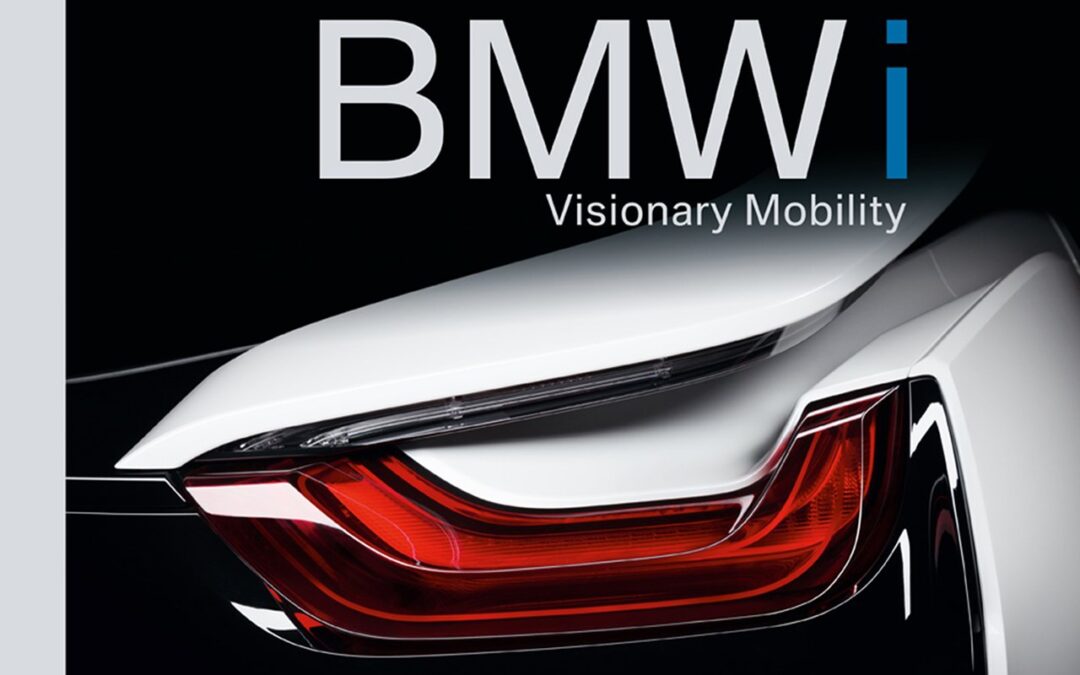
In the spring of 2008, a think tank of engineers, designers, trend researchers, and financial experts met on a factory floor of BMW’s parent plant in Munich to rethink mobility for a world of dwindling resources. Providing extensive insight into BMW’s workshop of ideas, this volume traces the venture’s design history and looks to the future of sustainable cars.
Grappling with major challenges of our time—from climate change to megacities and the scarcity of resources—contributors imagine solutions taking shape through technological innovations, networked mobility, sustainability in production, and the use of renewable materials. A unique look behind the scenes, this volume opens a window onto BMW’s complete development process, from initial conception to world premiere, presenting models for everything from plug-in hybrids with eucalyptus wood interiors to full-electric, self-driving cars. Replete with close-up photographs and fascinating model drawings, BMW i is a must-have for lovers of modern design and automobiles and for anyone interested in electro-mobility and sustainable technologies.

Three quarters of a million people are in a plane somewhere right now. Many millions travel by air each day. For most of us, the experience of being in an airport is to be endured rather than appreciated, with little thought for the quality of the architecture. No matter how hard even the world’s best architects have tried, it is difficult to make a beautiful airport.
And yet such places do exist. Cathedrals of the jet age that offer something of the transcendence of flight even in an era of mass travel and budget fares. Here are twenty-one of the most beautiful airports in the world.
The book features:
Wellington International Airport, ‘The Rock’ shaped like the dangerous cliffs of a local legend
Kansai International Airport, Renzo Piano’s gigantic project built on three mountains of landfill
Shenzhen International Airport, a manta ray shaped terminal putting this booming region on the map
Daocheng Yading Airport, the world’s highest civilian airport in the middle of the Tibetan mountains
Chhatrapati Shijavi International Airport, rising from the slums of Mumbai like a Mogul palace
Queen Tamar Airport, a playfully iconic modern airport nestled in the mountains of Georgia
King Abdulaziz International Airport, the gateway to Mecca resembling a Bedouin city of tents
Pulkovo Airport, mirroring the city of St Petersburg with bridges, squares and art
Berlin-Tegel Airport, ultramodernity, 1970s style
Copenhagen Airport, an icon from the golden age of air travel
Franz Josef Strauß Airport, sober and easy to negotiate, Munich’s model airport
Paris Charles du Gaulle Airport, the brutalist icon that launched the career of airport architect Paul Andreu
London Stansted Airport, Norman Foster’s return to the golden age of air travel
Lleida-Alguaire Airport, a relic of Catalonia’s early 21st century building boom
Madrid-Barajas Airport, Richard Rogers and Antonio Lamela’s calm, bamboo-panelled Terminal 4
Marrakesh Ménara Airport, a blend of 21st century construction and traditional Morrocan design
Santos Dumont Airport, Rio de Janeiro’s modernist masterpiece
Carrasco International Airport, Rafael Viñoly’s design inspired by the sand dunes of his native Uruguay
Malvinas Argentinas International Airport, echoing the mountains and glaciers of Tierra del Fuego
John F Kennedy International Airport, Eero Saarinen’s glamorous jet-age TWA terminal
Spaceport America, a vision of the future in the New Mexico desert

A definitive guide to the iconic BMW GS, the model that revolutionized the dual-purpose adventure bike in 1980. Combining all-terrain capability, high performance and on-road ride comfort, the GS is the bestselling large-capacity motorcycle in the UK and is still evolving today. Including comprehensive specification details, owners’ experiences and previously unseen pictures, BMW GS – The Complete Story covers:
The original R80G/S and its impact on the industry
Design and development of all the updated models
Radical engineering concepts and technology – notably the rear ‘Paralever’ swinging arm suspension and drive unit
Worldwide racing success for the GS, including wins at the Paris-Dakar Rally
The all-new R1200GS of 2013, including development of its partially liquid-cooled boxer engine, and the future of the GS
Inspirational stories and the GS in the media, including Long Way Round with Ewan McGregor and Charley Boorman
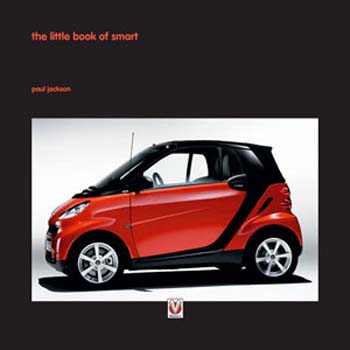
“What started off as an idea from Swiss watchmaker Swatch eventually evolved into the successful launch of the smart brand, now an integral part of the Mercedes-Benz family and — in its first ten years — achieving sales of more than three quarters of a million cars around the world. It hasn’t all been plain sailing for smart, though.
Well-publicized financial woes, the launch of at least one inappropriate model range and the subsequent rationalization of the entire product line-up meant plenty of problems along the way. But throughout it all, fans of the smart concept have remained loyal to the brand and sales of the fortwo city car continued to prosper.
These days, the future looks rosier. An all-new for two model range was launched in 2007, along with the announcement of the long-awaited debut of the smart brand into the American market for 2008. The latest model is more sophisticated and more in tune with today’s buyers tastes, while losing none of the inventiveness, practicality and sheer chic appeal of its predecessors.
In “”The Little Book of Smart,”” author and smart fanatic Paul Jackson guides us through the entire history of the brand, its highs and lows, its successes and failures, and on to today — with the very latest for two line-up promising major sales worldwide and, of course, helping to pave the way for a future for smart in the USA. It’s a fascinating tale, told succinctly and in an entertaining style, and complemented by full color photography throughout.”
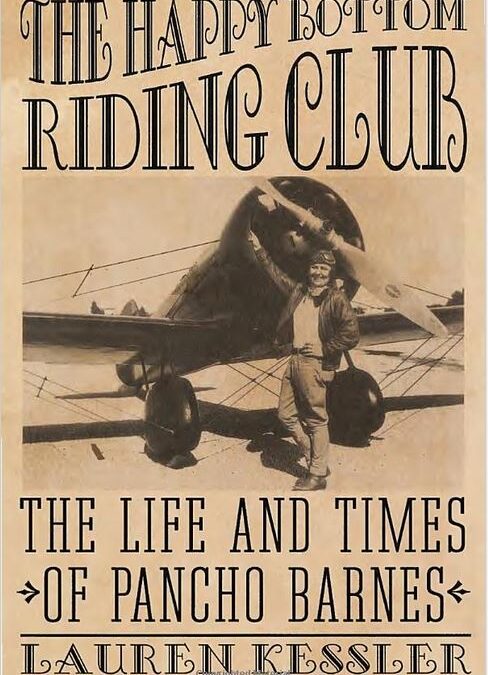
Pancho Barnes was a force of nature, a woman who lived a big, messy, colorful, unconventional life. She ran through three fortunes, four husbands, and countless lovers. She outflew Amelia Earhart, outsmarted Howard Hughes, outdrank the Mexican Army, and out- maneuvered the U.S. government. In The Happy Bottom Riding Club, award-winning author Lauren Kessler tells the story of a high-spirited, headstrong woman who was proud of her successes, unabashed by her failures, and the architect of her own legend.
Florence “Pancho” Barnes was a California heiress who inherited a love of flying from her grandfather, a pioneer balloonist in the Civil War. Faced with a future of domesticity and upper-crust pretensions, she ran away from her responsibilities as wife and mother to create her own life. She cruised South America. She trekked through Mexico astride a burro. She hitchhiked halfway across the United States. Then, in the late 1920s, she took to the skies, one of a handful of female pilots.
She was a barnstormer, a racer, a cross-country flier, and a Hollywood stunt pilot. She was, for a time, “the fastest woman on earth,” flying the fastest civilian airplane in the world. She was an intimate of movie stars, a script doctor for the great director Erich von Stroheim, and, later in life, a drinking buddy of the supersonic jet jockey Chuck Yeager. She ran a wild and wildly successful desert watering hole known as the Happy Bottom Riding Club, the raucous bar and grill depicted in The Right Stuff.
In The Happy Bottom Riding Club, Lauren Kessler presents a portrait, both authoritative and affectionate, of a woman who didn’t play by women’s rules, a woman of large appetites–emotional, financial, and sexual–who called herself “the greatest conversation piece that ever existed.”

For some people, driving is an art; for others, it’s a science. At the Isaac Newton School of Driving, though, every car is a laboratory on wheels and every drive an exciting journey into the world of physics. As explained by renowned science writer and physics professor Barry Parker―whose father was a car mechanic and garage owner―almost every aspect of driving involves physics. A car’s performance and handling relies on fundamental concepts such as force, momentum, and energy. Its ignition system depends on the principles of electricity and magnetism. Braking relies on friction―yet another basic scientific concept―and if the brakes fail, the resulting damage, too, can be predicted using physics.
Parker’s first lesson describes the basic physics of driving: speed and acceleration; why you get thrown forward while braking or outward while turning; and why car advertisements boast about horsepower and torque. He goes on to discuss the thermodynamics of engines, and how they can be more fuel efficient; and what friction and traction are and how they keep a car’s tires on the road, whether it’s dry, wet, or icy. He also describes how simple laws of physics enable scientists to design aerodynamic cars and high-tech steering systems. Parker then explores the high-performance physics of auto racing, outlines how traffic accidents are reconstructed by police, uses chaos theory to explain why traffic jams happen, and describes what cars of the future might look like. Whether you drive a Pacer or a Porsche, The Isaac Newton School of Driving offers better―and better-informed―driving through physics.

Introduced at the opening of the New York World’s Fair in April 1964, the Ford Mustang was based on mechanicals from the earlier Ford Falcon compact car. It quickly established a new motorcar category―the “pony car”―which was widely copied by domestic and overseas competitors. From the outset, the Mustang represented inspired product planning and design, followed by brilliantly executed marketing. Ford’s Mustang team effort used every tool in the vehicle-marketing toolbox: clever teases long before the new product went on sale, unprecedented publicity, simple but effective advertising, the stage at the World’s Fair, movie placement, distribution of toy plastic models, and even a replica pedal car for the young drivers of the future. With a measure of luck, it became a classic case of releasing the right product at the right time, and Ford sold one million units in less than two years.

Architect John Parkinson died in 1935, and the Los Angeles Times praised him: “Future generations have only to walk through the streets of Los Angeles to be reminded how much John Parkinson in his lifetime contributed to the city that grew up under his hand.” In Iconic Vision: John Parkinson, Architect of Los Angeles, author Stephen Gee proves that this singular visionary created the look of America’s most dynamic metropolis, long before the world recognized the city’s importance. Consider that among more than four hundred buildings in the City of Angels that carried his architectural imprimatur, John Parkinson designed:
- Los Angeles City Hall, the most iconic building in California, the tower that changed a futuristic city’s skyline forever;
- Bullock’s Wilshire, the towering structure that rivals the Chrysler Building as America’s premier Art Deco edifice;
- Los Angeles Memorial Coliseum, the world’s only modern stadium to host two Olympic Games, 1932 and 1984–and still home to the USC Trojans;
- Los Angeles Union Station, the Mission-Moderne-Art Deco masterpiece that brought together California’s railroads and became a legend before the first trains roared in.
Iconic Vision, the first biography of the master architect, documents–in remarkable detail and images–Parkinson’s monumental contributions to the city he loved. Although other architects’ names have become synonymous with the city, John Parkinson designed more landmark buildings in Los Angeles than any other architect, living or dead. And, while other architects may have taken credit for Parkinson’s designs, Stephen Gee’s penetrating biography establishes the truth. He tells the story of a man who envisioned tomorrow.
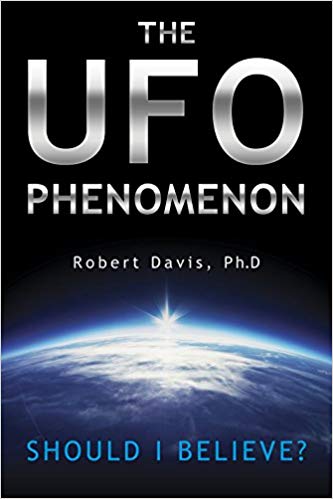
Should you believe in UFOs (unidentified flying objects)? If you question why the subject of UFOs should be taken seriously, this book provides that answer. Fascinating evidence, new perspectives, and detailed analysis, make this a thought-provoking study for those at every level of knowledge and belief in the UFO phenomenon. Through well-researched and convincing, documented insight, discover compelling individual and mass UFO encounters, giving you a direct appreciation of the possible nature and origin of this extraordinary topic. Learn about pilot and astronaut UFO experiences, strange encounters with UFOs, alien abductions, official government and military declassified UFO documents, and future directions and research needed to better understand the phenomenon. New viewpoints are provided through an objective investigation of the alleged alien visitations of earth and authenticity of the UFO phenomenon. Should you believe? Find out.
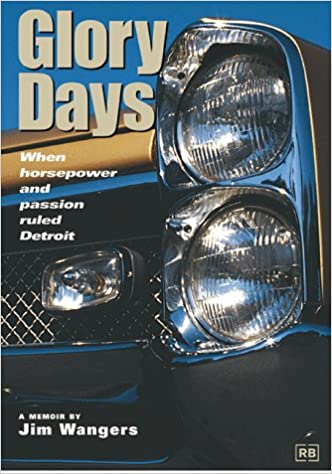
Glory Days conjures up images of cruise nights, impromptu drag races, and genuine American fun. It is the story of the GTO, Tigers and Monkeys, of Royal Pontiac, drag racing, corporate politics, and personal allegiances. Glory Days illuminates an era when Detroit’s Woodward Avenue fairly rumbled with V-8 power, as young people slowly cruised the wide boulevard. Glory Days is also an American success story, giving an insiders view of what it took then, and what it will take in the future, to keep alive America’s passion for the automobile. In Glory Days, Jim Wangers uses his 45-year career in Detroit as the basis for explaining successful brand marketing for automobiles:
Why brand management for cars differs from other branded products
How to position a model for the best possible tie-in promotion–and how not to
What it takes to establish and evolve a brand image Wangers knows what he is talking about, for he was part of the most successful brand marketing campaign to ever come out of Detroit. At a time when such automotive legends as Bunkie Knudsen, Pete Estes, and John DeLorean held sway in the Motor City, Jim Wangers created and defined the American muscle car image, devising savvy brand marketing strategies to promote the car that started it all and went on to become a cultural icon: the Pontiac GTO.
Autobooks-Aerobooks 2900 W. Magnolia Blvd. Burbank, CA 91505 (818) 845-0707 Hours: Tuesday-Friday 10:00 AM – 6:00 PM Saturday 10:00 AM – 6:00 PM Closed Sunday and Monday Accept Credit Cards gift cardYES, We have Gift Cards - Click Here AUTOBOOKS IS OPEN...














